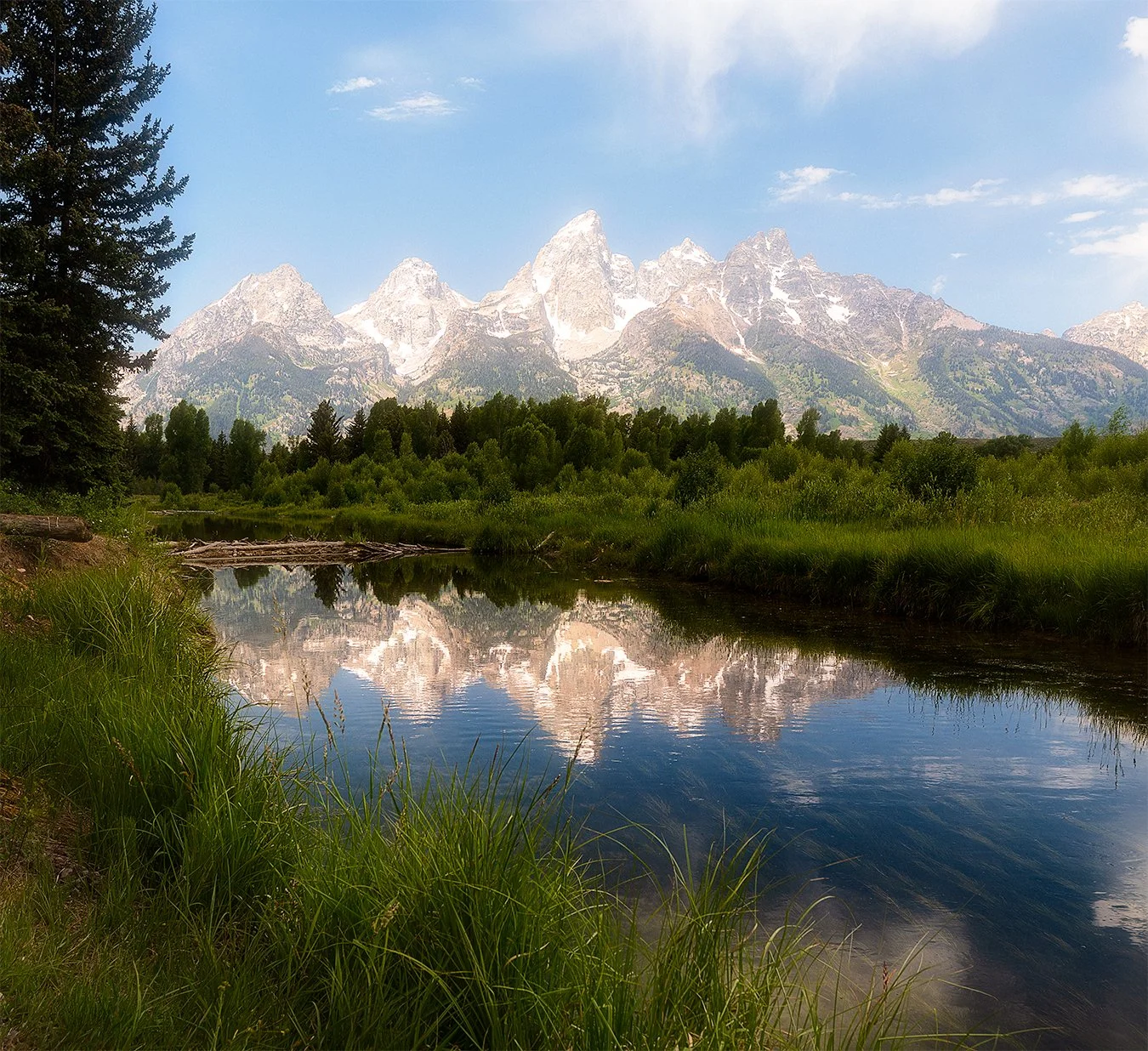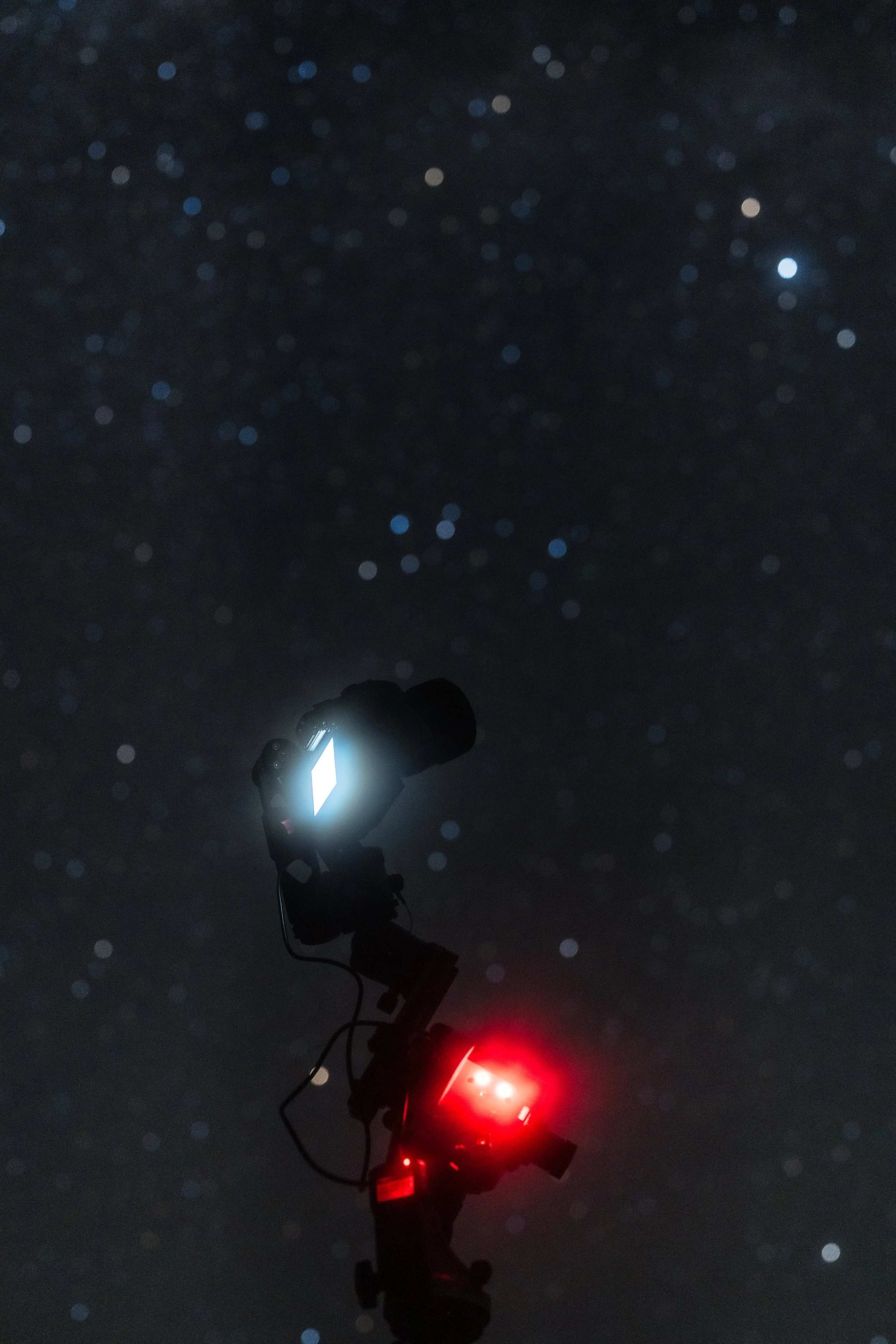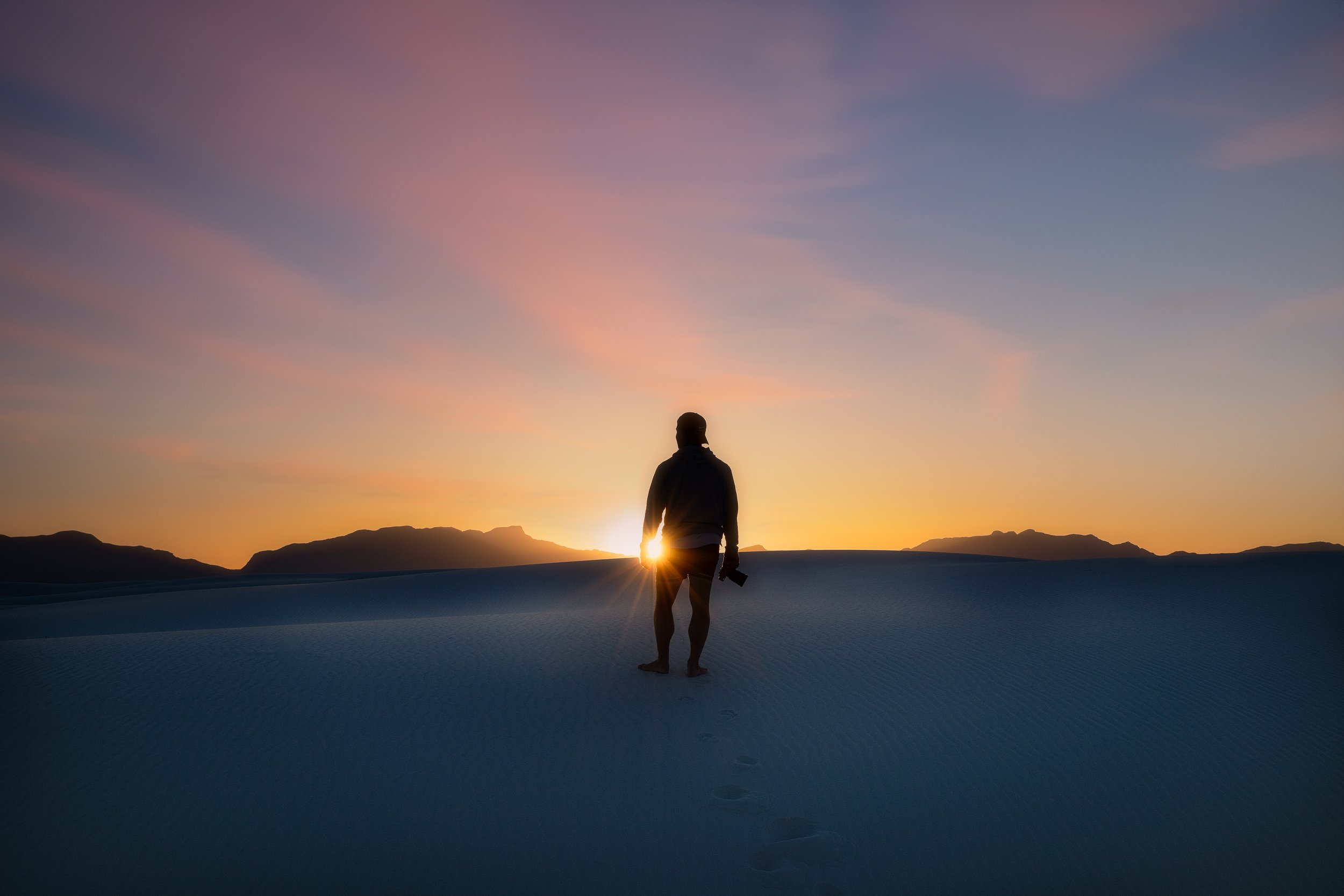
What’s in My Bag
Every tool in this kit has earned its place. Whether I’m shooting stars in the desert or chasing first light in the mountains, I rely on gear that’s durable, lightweight, and weatherproof (mostly). This list includes the cameras, lenses, and accessories I trust to bring landscapes and night skies to life .
Links below are Amazon affiliate links — no extra cost to you
Cameras:
Main: Sony A7 IV
My new workhorse with its 33MP sensor and remarkable dynamic range, the A7 IV handles harsh mid-day light and subtle night shadows with ease. The noise performance holds steady at higher ISOs — essential for clean star fields — and the color science feels true to the scenes I chase. Don’t let Nikon users tell you otherwise. The 10-bit 4K video gives me cinematic flexibility in post, without sacrificing clarity in low light.Astro: Sony A7 III modded by Spencer’s Camera
My A7 III was modified by Spencer’s Camera to capture more of the hydrogen-alpha spectrum — allowing deep reds and nebula detail to shine through. It’s strictly my tool for the night, designed to reveal what the human eye can’t. When paired with the right lens and dark skies, this camera pulls stars out of shadows and color out of the cosmos.
Lenses:
Sony FE 16-35mm f/2.8: Ultra-wide, razor sharp, and built for versatility. This lens is my go-to for landscapes and night skies alike — wide enough to capture the Milky Way, fast enough to shoot handheld in golden hour light. This is my workhorse lens right now.
Sony FE 24-70 f/2.8 GM II: This is my everyday workhorse — sharp, fast, and built for any condition. Whether I’m framing sweeping landscapes or isolating a subject under golden light, this lens delivers. Even under the stars, it holds its own for Milky Way shots at any focal length.
Sigma 14mm f/1.4 DG: Engineered for astrophotography, but just as powerful for wide-open landscapes. The 14mm field of view captures massive scenes — from desert skylines to star-filled skies— while the f/1.4 aperture excels in low light without sacrificing sharpness. It’s heavy, but precise, and delivers some of the cleanest results I’ve ever pulled from a lens. I always use this lens for my timelapses as well.
Sony GM 50mm f/1.2: This lens is all about mood and depth. The 50mm focal length gives a natural perspective, while the ultra-fast f/1.2 aperture creates rich separation and smooth falloff — perfect for low-light scenes, night panos, isolating elements in a wide landscape, and lifestyle shots. This is my favorite lense in my bag.
Astrophotography Gear:
Sky-Watcher Sky Adventurer 2i: This is what I use to polar align with Polaris to be able to take exposures longer than 30 seconds. Depending on the focal length you are using anything beyond 30 seconds will give you star trails. The deeper the focal length the shorter the exposure time needs to be. if you aren’t tracking.
Laser Pointer: I use this to assist with polar alignment by shining it through the telescope and aiming at the Polaris.
Intervalometer: This is what I use to take exposures longer than 30 seconds which is where Sony tops out.
Everything Else:
Benro Mammoth Carbon Fiber Tripod: Light enough for travel, strong enough to hold the added weight of the Sky Watcher. The Mammoth’s carbon fiber legs provide stability on uneven terrain without weighing me down. With a high load capacity and low-angle capability, it’s built for everything. You want to invest in a sturdy tripod as the slight amount of movement can ruin a long exposure.
Sirui AM-324 Professional Tripod with Low Gravity Ballhead: This is my go-to tripod when I need to move light and fast. The carbon fiber build keeps weight down without sacrificing strength, and the compact AM-40 ball head stays solid under pressure. It’s ideal for backpacking, quick hikes, or when I want a dependable setup without the bulk — whether I’m catching sunrise from a ridgeline or shooting stars deep in the backcountry.
Sirui Ballhead: I use this on my Benro, its smooth, precise, and built like a tank. This ball head locks down securely even with heavier gear, making it perfect for long exposures and night shooting. The fluid panning and tension control give me confidence whether I’m framing a static Milky Way shot or adjusting mid-sunset.
WANDRD PRVKE 31L Weatherpoof Pack: Built for the elements and designed for creatives, the PRVKE 31L keeps my gear dry, secure, and organized no matter where I’m headed. With a weatherproof shell, customizable camera cube, and quick side access, it’s the kind of pack that disappears on your back — until you need it to perform. The two laptop sleeves are a huge bonus as well.
Andoer Panoramic Head: After struggling to take panos of the night sky with just a ballhead, this tool has been a game changer. This pano head makes it much easier to frame up your shots and avoid distortion. The benefit of taking a pano instead of shooting super wide is that you still get a wide view image while having more detail at deeper focal lengths. I usually shoot these anywhere from 35mm to 50mm. This one specifically is super light and travel friendly.
Black Diamond Weatherproof Headlamp with red light: I use this to help see at night while preserving night eyes.




